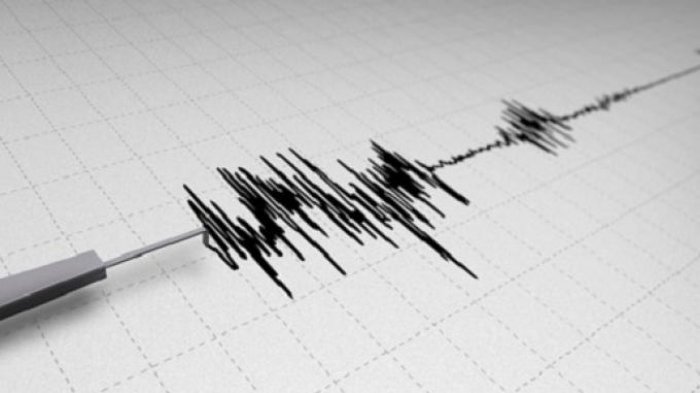Megathrust earthquakes represent one of the most devastating natural phenomena on Earth, capable of causing widespread destruction and loss of life. In this article, we delve into the science behind mega thrust earthquakes, exploring their causes, characteristics, and impact on vulnerable regions around the world.
The Phenomenon of Megathrust Earthquakes

What is a Megathrust Earthquake?
A megathrust earthquake occurs at subduction zones, where one tectonic plate is forced beneath another in a process known as subduction. These earthquakes are among the most powerful and destructive types of seismic events, with magnitudes often exceeding 9.0 on the Richter scale. Mega thrust earthquakes are characterized by their long rupture lengths, large vertical displacements, and significant tsunamigenic potential.
Causes and Mechanisms of Megathrust Earthquakes
The primary cause of megathrust earthquakes is the buildup of stress along the interface between two converging tectonic plates. As the subducting plate descends into the mantle, it generates friction and pressure along the subduction zone boundary. Eventually, the accumulated stress is released in the form of a seismic rupture, resulting in a mega thrust earthquake. The sheer size and force of these events can cause massive movements of the Earth’s crust and trigger secondary hazards such as landslides and tsunamis.
Notable Megathrust Earthquakes in History
Throughout history, megathrust earthquakes have left a trail of devastation in their wake, claiming countless lives and causing widespread destruction. One of the most infamous examples is the 2004 Indian Ocean earthquake and tsunami, which originated off the coast of Sumatra, Indonesia, and resulted in the deaths of over 230,000 people across 14 countries. Other notable megathrust earthquakes include the 2011 Tohoku earthquake in Japan, the 1960 Valdivia earthquake in Chile, and the 1964 Alaska earthquake in the United States.
Impact and Consequences of Megathrust Earthquakes
The impact of a megathrust earthquake can be catastrophic, with consequences ranging from structural damage and infrastructure failure to loss of life and displacement of communities. The violent shaking caused by these earthquakes can collapse buildings, bridges, and other critical infrastructure, leading to extensive property damage and disruption of essential services. In coastal regions, the accompanying tsunamis can inundate coastal areas with powerful waves, causing further devastation and loss of life.

Mitigation and Preparedness Efforts
Given the catastrophic potential of megathrust earthquakes, efforts to mitigate their impact and improve preparedness are crucial. Scientists use seismological monitoring, geodetic measurements, and computer modeling to study mega thrust earthquakes and better understand their behavior. This knowledge enables authorities to develop early warning systems, evacuation plans, and building codes aimed at reducing vulnerability and increasing resilience in at-risk communities.
Navigating the Threat of Megathrust Earthquakes
In conclusion, megathrust earthquakes represent a formidable and complex threat to vulnerable regions around the world. While these seismic events are inherently unpredictable, ongoing research and preparedness efforts are essential for mitigating their impact and protecting lives and property. By understanding the causes, characteristics, and consequences of mega thrust earthquakes, we can work towards building more resilient communities and minimizing the devastation wrought by these powerful natural phenomena.
The Unyielding Force of Megathrust Earthquakes
Megathrust earthquakes stand as some of the most formidable wdbos and destructive natural events that Earth can unleash upon its surface. In this article, we delve into the dire repercussions of mega thrust earthquakes, comprehending the havoc they wreak on affected regions and the long-lasting scars they leave behind.

Understanding Megathrust Earthquakes
Megathrust earthquakes originate at subduction zones, where one tectonic plate is forced beneath another. The immense pressure and friction along these subduction zones can lead to the sudden release of energy, resulting in seismic ruptures of staggering magnitude. Mega thrust earthquakes are characterized by their immense power, often registering magnitudes greater than 9.0 on the Richter scale, and their capability to generate devastating secondary hazards such as tsunamis.
The Catastrophic Consequences
The consequences of megathrust earthquakes are nothing short of catastrophic, leaving a trail of destruction and despair in their wake. The violent shaking unleashed by these seismic events can level buildings, bridges, and infrastructure, rendering communities uninhabitable and disrupting essential services. Coastal regions are particularly vulnerable, as mega thrust earthquakes often trigger massive tsunamis capable of inundating coastal areas with towering waves, causing widespread devastation and loss of life.
Human Toll and Loss of Life
Perhaps the most heartbreaking aspect of megathrust earthquakes is the staggering loss of life they inflict on affected communities. The combination of powerful ground shaking and ensuing tsunamis can lead to mass casualties, with tens of thousands of lives lost in the blink of an eye. The 2004 Indian Ocean earthquake and tsunami, which claimed the lives of over 230,000 people across 14 countries, stands as a haunting reminder of the human toll exacted by these merciless natural phenomena.
Economic Devastation and Infrastructure Collapse
In addition to the staggering human toll, megathrust earthquakes exact a heavy economic toll on affected regions, with the cost of rebuilding and recovery reaching into the billions of dollars. The destruction of critical infrastructure, including roads, ports, and utilities, hampers relief efforts and prolongs the recovery process, exacerbating the suffering of affected communities. The long-term economic impact of mega thrust earthquakes can be felt for years, if not decades, as communities struggle to rebuild and regain their footing in the aftermath of disaster.
Environmental Degradation and Ecological Damage
Megathrust earthquakes can also inflict severe environmental damage and ecological disruption, altering landscapes and ecosystems in profound ways. The upheaval caused by seismic shaking and tsunamis can trigger landslides, soil liquefaction, and coastal erosion, reshaping coastlines and habitats. Pollution and contamination from damaged infrastructure and hazardous materials further compound environmental degradation, posing long-term threats to public health and ecosystem resilience.
Conclusion: Navigating the Aftermath
In conclusion, the impact of megathrust earthquakes is both immediate and enduring, leaving affected communities reeling from unimaginable loss and devastation. While the human spirit is resilient and communities often rally together in the face of adversity, the scars left by these catastrophic events serve as a sobering reminder of the awesome power of nature and the imperative of preparedness and resilience in the face of uncertainty. As we confront the ever-present threat of mega thrust earthquakes, it is incumbent upon us to heed the lessons of the past, invest in robust mitigation and preparedness efforts, and stand in solidarity with those who bear the brunt of nature’s fury.
Read More Article About “Presidential Debate 2024: Biden’s Urgent Showdown with Trump After Evasive Months“




